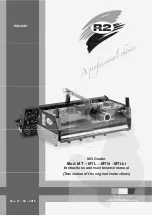
Maximum Permissible Exposure (MPE)
The amount of laser light that a person can be exposed to without it causing harm to eyesight is
known as the Maximum Permissible Exposure (MPE) or Exposure Limit Value (ELV). These
levels are defined the in the British Laser Safety Standard BS/EN 60826-1:2007, and more
recently in the Laser H&S regulations. When people are exposed to laser light which is above the
MPE, it poses a risk of causing eye damage. This could be of concern when the laser effects are
viewed directly in the face or there is a chance that they could be.
How do I know what the MPE is?
Knowing what the MPE and exposure level is for a given laser effect is quite a complex and
involved process to establish. For it is dependant on a whole number of conditions and variables
that need to be taken into account. The laser safety standard BS/EN 60825-1:2007 contains the
data required to calculate the safe levels, but it is not straightforward to interpret. Laser Safety
\Calculation Software has been developed to help ease the task of establishing laser effects
exposure.
Laser Safety Officer
The PD IEC/TR 60825-14:2004 Laser Safety Guidance recommends that all establishments that
use, or businesses that work with Class 3B laser products, should appoint a Laser Safety Officer
(LSO). The Laser Safety Officer should be aware of the safety issues when using lasers, and is
responsible for overseeing how the laser is used. In smaller businesses, the LSO will probably
also be the installer, operator, owner etc.
Diffraction vs Direct X-Y Scanning Lasers
Diffraction type lasers have become increasingly popular in recent years creating laser effects that
split the beam into hundreds, if not thousands of less powerful beamlets. This type of effect is
usually much safer to view directly than traditional scanned beam effects, for the simple reason
that as the beam is split into smaller beams, the power in each beam is reduced. With x-y
scanning systems, even though it may look as if the power is being reduced by the movement,
the moment any beam crosses a person’s face, the full power of the beam may briefly enter
someone’s eye. Caution should still be used with diffraction effects, in particular ensuring that the
brighter central beams are kept above head height.
Separation Distances
Health and Safety guidance states that for supervised installations laser light above the Maximum
Permissible Exposure (MPE) should not be accessible to members of the audience. It also
recommends the area where the MPE may not be exceeded, extends from 3m above, and 2.5m
laterally from any location in the venue where members of the public may gain access during the
display. The following diagrams illustrate this.
Equinox Lexor Laser
Safety



































